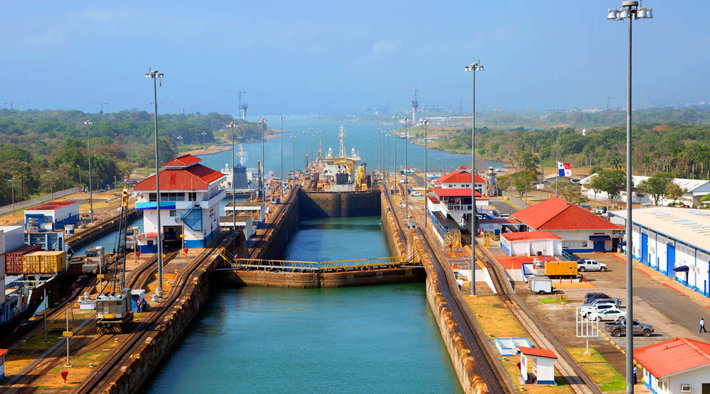The Panama Drug Addiction Problem

Imagine you are a Colombian drug lord.
You have a large, well-armed, well-financed army of manufacturing and drug trafficking staff.
You have your own ruthless security force.
Your manufacturing facilities are just one tiny little national border away from the largest merchant marine force in the world.
This little country has one of the largest port systems in the world, shipping more than eleven million containers each year.
It has one of the largest concentrations of banks in the Americas.
It also has a poor law enforcement record and a history of money laundering and government corruption.
Might this look like an exceptional opportunity to move your drugs through these eleven million cargo containers? In fact, from this country, you have a choice: you can go west on a Pacific route to North America or east to North America, Africa or Europe.
What’s more, you and your staff will completely blend in with the Hispanic population.
And so you have the core of Panama’s problem: a wealth of shipping resources adjacent to the world’s largest supply of cocaine.
Panama’s Port Security a Target of the United Nations
For this reason, Panama is one of the top targets of United Nations programs to improve contraband detection in container shipping. Panama has just recently come on board with this endeavor. In February 2010, the first two large seizures were made by virtue of their participation in the program. First, in a shipment that was supposed to be coffee, 24 kg of cocaine and 2 kg of heroin, with a total street value of more than $3 million, were found stashed in a sports bag. It was destined for New Jersey.
In the second seizure, a shipment that originated in Venezuela that was headed for Barcelona was intercepted, with $15.6 million worth of cocaine on board. Grand total, that is nearly $19 million in drugs that will not be creating addiction, overdoses or pain and suffering.
In 2005, long before the instigation of the UN drug detection program, 30.5 tons of cocaine were seized. This was the highest figure in South America. By comparison, Nicaragua’s authorities only seized 7.3 tons that year.
Panama Suffers from Societal Problems Aggravated by Drug Trafficking
The harsh effects of drug trafficking are primarily felt in and around the capital city of Panama City on the west coast of the country. For example, in Panama in general, the murder rate is just 11 deaths per hundred thousand citizens. In Panama City, it was nearly three times as high, at 30 per 100,000 people.
Overall, Panama has higher drug use statistics than most other Central American countries. And not just cocaine, but also cannabis and synthetics. Of course, the shipping facilities would work both ways: Panamanians would have better access to drugs coming IN the country than most other countries. And so the ecstasy use statistics are higher than any other South American or Central American country except Argentina. The government of Panama recently revised its estimate of amphetamine-type stimulants up, to 1.2 percent of the population, twice as much as Suriname and three times as high as Chile.
No other Central American country comes close to Panama’s cocaine consumption figures (1.2 percent of those between 12 and 65 years of age). And its cannabis consumption is many times higher than most other Central American counties. However, Belize tops the list at 8.5 percent of the population using cannabis - more than twice Panama’s rate.
Rehab Haven for the Rich?
Ironically, Panama happens to also be a haven for those wishing luxury drug detox or drug rehabilitation. Traveling abroad for drug treatment or other medical treatment is referred to as “medical tourism.”
One can even travel to exclusive drug rehab facilities that administer ibogaine, a hallucinogenic drug that is used in some foreign countries as a form of “drug rehabilitation.” In Panama, this treatment is available as part of a seven-day hospital stay that will run you between $8,000 and $20,000.
What makes a lot more sense is to dismantle addiction by getting at the root causes of the problem and healing the body and the mind of the whole person. By this route—not by administering hallucinogenic drugs—addiction can be replaced with the ability to make drug-free decisions every day. This is the benefit that results from the completely drug-free Narconon program that is getting people off drugs in more than forty countries around the world, every single day.
 ®
®